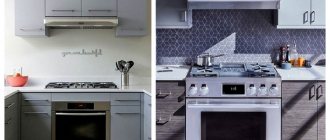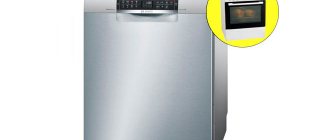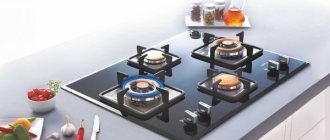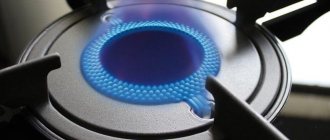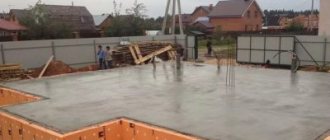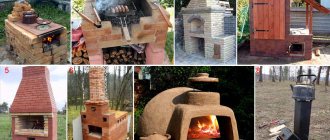You can argue forever about which oven is better - gas or electric, but will it be effective? Everyone has their own preferences, and such issues can only be resolved by comparing all the pros and cons of kitchen appliances. This article will not contain any beliefs, only facts that can influence a person's choice in the matter of equipment. Will a built-in oven be more ergonomic, what are the advantages of using gas or electricity, how to use it safely - all these questions will be discussed in detail.
The principle of electric and gas ovens
Almost every day people use ovens without thinking about how they work. Despite the fact that modern models have many more functions, the basic principle of their operation has remained virtually unchanged.
Any oven is a metal box with holes for ventilation. Inside the box there is an oven chamber, between it and the frame there is heat-insulating material. Insulation is needed to prevent heat from escaping into the environment. Thanks to this, modern stoves are more economical.
Heating of the product is carried out according to the same principle: heat spreads from the heating part throughout the oven chamber, reaching temperatures from 40 to 250, and sometimes more, degrees. In an electric oven, a heating element is used as a heater; in a gas oven, food is heated through fire.
An oven powered by electricity allows you to heat the dish evenly.
Heaters are placed only at the bottom or at the top of the chamber, or both. Some ovens have three heaters, the third is placed on the back panel, along with the convector.
The gas oven allows you to adjust the flame level in the burner. Modern ovens are equipped with a safe built-in ignition function, that is, to light the flame in the oven, just press a button and turn the knob to the desired level.
Modern models of gas ovens are safer than before
Recommendations for use
It is not the user who decides which oven to install, but his capabilities. If the housing does not have a gas main, there is no point in considering the advantages of gas appliances. Installing a stove from a gas cylinder will not be considered, since this is not the most economical and safe option. It is better to use it where there is no other solution, for example in the country.
But not everything is so smooth with electric furnaces. There are limitations here too. It is necessary to take into account the power of electricity coming out of the outlet and the amount of energy consumed by the oven. Therefore, you should be prepared for the fact that in an old house or apartment, local wiring may not be able to handle such a powerful structure.
Before making a choice, you need to carefully familiarize yourself with the technical capabilities of your home and only then choose one or another type of household appliance.
When do accidents happen?
Accidents when heating with gas stoves most often occur at night. The reason is that it takes time for the concentration of gas or carbon monoxide in the air to increase to dangerous levels. And it is there when the residents are resting.
That is, in the dark, the likelihood that owners of gas equipment will suspect something is wrong and stop heating is reduced. Or neighbors and random people who happened to be nearby in time will not come to help. This happens quite often. when a gas leak occurs, the presence of which is determined by a characteristic odor.
Gas consumers who violate fire safety rules, especially on a regular basis, need to be aware that they are socially dangerous. Therefore, the legislation allows city gas companies and other gas distribution organizations to immediately terminate service contracts with subsequent cessation of gas supply when it is discovered that homes are being heated using appliances intended for cooking.
This means that by eliminating stove heating at night while all family members are resting, you can significantly reduce the likelihood of an accident, destruction or damage to property. But this is not a panacea, since there are many known incidents that occurred at any other time of the day.
It is also important, if you discover a breakdown of the stove, immediately contact the service organization with which you have an agreement, so that a specialist can promptly detect and repair the breakdown. The use of faulty gas equipment is prohibited by law.
Heating modes for gas and electric ovens
It's no secret that different dishes require different times and temperatures to cook. Also, the speed at which the chamber heats up plays an important role in creating a culinary masterpiece. It follows: the more varied the cooking modes, the larger the volume of dishes this oven can cook.
Electric ovens with heaters at the top and bottom of the oven chamber allow you to turn them on both simultaneously and separately. Ovens with a heating element in the top often have additional grilling equipment installed.
Chamber of an electric oven with grill
More expensive ovens come with the added feature of convection heating. This baking method works under the influence of a fan, which distributes hot air evenly throughout the oven. Convection allows you to achieve uniform baking of food, the housewife will forget what a burnt crust is, and at the same time the dish is raw inside.
Schematic example of air distribution inside a chamber using convection
Inexpensive gas ovens are limited by heat direction. The heat spreads only from below, coming from the gas burner. However, the heating rate is much higher than that of its electronic counterpart.
A gas oven, despite the limited spread of heat, heats the chamber much faster, which means the dishes will cook faster
Ovens powered by gas can also be equipped with a grill, both gas and electric. In the latter case, it will no longer be a gas oven, but a gas-electric one, that is, a hybrid of both types of ovens.
Gas oven with electric grill and built-in convector function. Despite the fact that a gas-powered grill is more complex, it imparts richer flavors to the dish than an electric one.
Also, many models of gas ovens have a built-in convector. It allows the heat from the burner to be distributed evenly throughout the oven, which significantly improves the quality of the cooked food.
Electric ovens are equipped with a large number of operating modes, however, this does not prevent gas ovens from competing with them
Variety of cooking functions
If we talk about culinary functions, then the electric oven wins out of the two types. Unlike a gas oven, in addition to the main functions, the electric oven has additional modes, for example:
- Defrosting.
- A function that prevents the dish from cooling down and maintains it at the desired temperature.
- Languor.
In addition, modern manufacturers have equipped their electric ovens with steaming and quick heating modes.
More expensive models have a built-in timer that can be programmed not only to turn off, but also to turn on at the right time. Also, the oven itself will notify you that the contents are ready, thanks to a special temperature probe. There are automatic modes that can independently bring a certain dish to readiness. Both an inexperienced housewife and a child can handle such a stove.
From this we can conclude that an electric oven provides more opportunities for culinary creativity, so often, even where there is gas, many choose an oven powered by electricity.
Almost nothing has changed in the functional set of gas ovens over many years; this option is for lovers of more classic cuisine who do not expect anything special from a household appliance.
Let's sum it up
The choice of technology is everyone’s business. The differences between an electric oven and a gas oven are quite striking. The first option is characterized by: mobility, efficiency, versatility. For the second - power. The price issue also plays a big role, and here electricity has an advantage. Mobility is also on his side. But if you choose a better gas oven based on installation requirements, then it is better to lean towards this option.
It should be based only on personal preferences and the capabilities of the kitchen. Each housewife has her own requirements that the kitchen must meet. Also one of the important components is the appearance of the oven. It should fit perfectly into the interior and make you want to cook.
Ease of use
If we talk about convenience, then we need to proceed from individual preferences. A gas oven has a simpler control device. There is nothing complicated about it, just a few levers. The main change that the gas stove has undergone over the years, besides design, is the ignition of the nozzle; it has become not only more convenient, but also much safer.
Gas oven control levers
An electric oven can be equipped with electromechanical or fully electronic control.
Adjustment via electromechanics
Electromechanics are simpler in design, but electrical control opens up more possibilities for controlling the cooking process.
Electronically controlled oven
The choice of control method depends on the individuality and needs of each person.
Economical
Based on this parameter, gas ovens look preferable to electric ovens, because mains gas is cheaper than electricity.
However, this difference is not very noticeable if you rarely use the oven. But with frequent use of an electric oven, which consumes from 2 to 7 kW of electricity per cooking cycle, this difference in favor of a gas oven becomes especially pronounced. See also:
Which is better, induction or electric hob?
Availability of oven cleaning functions
It doesn’t matter which oven was chosen, in any case it will have to be washed. It is better to carry out this procedure immediately after cooking. Firstly, dirt comes off better this way, and secondly, a dirty oven is an ideal environment for the growth of harmful bacteria, and it’s unlikely that anyone will enjoy food with a burnt taste from a previous dish.
Inexpensive models will have to be washed yourself. The housewife was lucky if she became the owner of an oven with a bioceramic coating, to which fat almost does not stick, which means that cleaning such a cabinet will be much easier.
Ovens that are slightly higher in price have an automatic cleaning function. There are two types of self-cleaning:
- Catalytic purification. The oven chamber is cleaned already during cooking by starting a chemical reaction to speed up the process. Dirt and fat released from the dish are broken down into small atoms and sent to the filter using a special fan. This system starts automatically and is absolutely harmless to human health. Installed in both types of ovens.
- Pyrolysis. Cleaning is carried out at very high temperatures, about 500 degrees. This method can only be used in electric ovens, because it is very problematic to reach such a temperature with a gas burner. It is considered the most effective method, but ovens with this function are also expensive.
Operational safety
No gastronomic masterpiece will bring joy if there is a constant feeling that something is wrong with the oven. It's worth finding out which oven is better from a safety point of view.
Often the mere mention of gas allows us to draw a parallel with a threat to life. Of course, a gas leak can provoke very sad consequences - from poisoning to fire. To eliminate the possibility of suffering from a gas leak, you need to choose an oven with leak control. If the flame accidentally goes out, the gas flow will be blocked. In other ovens, when the fire goes out, automatic ignition is activated. In both cases, the risk of leakage is minimized. In addition to the installation of the oven, correct connection is important; this work should only be trusted to a specialist. During combustion, the gas is converted into carbon monoxide, so it is recommended to purchase a hood along with the oven.
This does not mean that electric ovens are absolutely safe. There is always a risk of overheating, and therefore fire, and a faulty stove can cause electrical harm to a person. There is also a possibility of nearby furniture catching fire. To prevent such moments, a thermometer is installed on the furnace body. If the norm is exceeded, the oven must be turned off. More expensive ovens are equipped with a special cooling system for the outer walls.
And yet, experts say that gas ovens are more dangerous. However, when installing any type of household appliance, all rules must be strictly followed.
Threats when heating a room with a stove
It is no coincidence that gas stoves in all relevant documents are called household appliances intended for cooking. This is done in order to clearly define the purpose of the products.
The photo shows the only correct and acceptable option for using a gas stove. Since it is used for cooking, and the gas consumer is nearby and controls the situation in order to avoid the occurrence of dangerous situations. Also, before turning on the device, it would be a good idea to make sure that there is draft in the smoke exhaust system and open the window
In addition, the name indicating the purpose of the device should motivate the user for its intended use. And also serve as a warning, to exclude the possibility of double interpretation of the purpose of the slab. Moreover, both for users and other parties (for example, city gas specialists, lawyers, firefighters, etc.).
If you don’t want to delve into legal complexities, but want to understand the issue, then just remember a few important rules:
- Stoves cannot be used to heat rooms;
- If rule #1 is ignored, the gas consumer becomes a violator of fire safety rules. As a result, they may be subject to administrative or even criminal liability. This is indicated by Art. 38 of Federal Law No. 69-FZ of December 21, 1994 “On Fire Safety”.
And then we’ll talk about unpleasant and dangerous situations that a violator of safety rules can find himself in. These include: fire and explosion hazards, as well as the effects of carbon monoxide on the body.
And each reason that makes gas dangerous should be read in detail.
Threat #1 - Possibility of Fire or Explosion
“Blue” fuel makes life more comfortable, and it is also economically beneficial. But there is also a significant drawback, which is that using gas is a risky procedure. For example, gas causes more accidents than electricity.
You should refrain from heating with a stove not so much for legal reasons, but because there is a high probability of causing significant damage to property. And not only for his own. But the most important thing is that the inappropriate use of gas appliances leads to numerous casualties. Since dozens of Russians die from explosions every year, and cases of suffocation lead to even greater losses
Therefore, stove users should remember that humanity has learned to consume gas relatively safely. But no more than that - the gas easily gets out of control. And this doesn’t require much; for example, an explosion will occur when the gas concentration is an insignificant 5% of the volume of the room, and it often ends with something igniting, which aggravates the situation.
We recommend that you familiarize yourself with the causes of explosions in apartments in more detail.
If the gas concentration is higher (over 15% of the volume), then a fire will occur.
When using gas appliances, you should never be sure of the efficiency of your ventilation system or the reliability of the stove design, as anything can happen. Reliance on statistics can be especially detrimental. For example, thoughts like “...my neighbor has been warming up like this for 3 years now...” or “...my grandmother has been heating her apartment this way all her life...” do not guarantee anything, but they instill relaxation. What leads to negligence and ignoring fire safety requirements
Dangerous gas accumulation in the kitchen and other rooms occurs after the flame on the stove is extinguished without turning off the taps.
This can happen when:
- insufficient air for gas combustion;
- malfunction of the stove, its incorrect operation.
Gas combustion is a reaction in which 9.52 times more air is burned. And this is under ideal conditions. That is, under normal conditions, even more air will be needed (1.1-1.5 times the indicated 9.52). Therefore, during active use of the stove, if the smoke removal systems are ineffective or if there is no removal of combustion products at all, the gas combustion reaction may simply stop. After which the gas will begin to fill the volume of the kitchen and other living spaces.
And although the situation described does not happen often, gas consumers do not need to be too confident in the efficiency of their chimney.
After all, one unfortunate gust of strong wind, precipitation in the form of rain, snow, frost, or fog can lead to sad consequences.
In any of the cases, traction becomes unstable, and in some cases it may disappear altogether. Sometimes reverse currents of air masses occur. What is called reverse thrust.
Owners of new gas appliances equipped with modern protective technologies need to be as careful as people when using them. using “vintage” units. Because the most reliable way to detect a gas leak is a gas leak detector and a person's sense of smell. But smell has never been considered an effective method, and only a few users install sensors
Contamination of the air ducts of the ventilation and smoke removal systems leads to a decrease in draft:
- combustion products;
- foreign particles of dirt and objects.
So, if gas combustion products are removed efficiently today, this does not guarantee anything tomorrow. For example, the presence of draft must be monitored before each time the stove is turned on, even if it is short-term and not intense. And over the course of several hours of active heating, conditions can change dramatically.
In addition to the “classic” option of heating with a gas stove, the Russians have come up with many others. One of them is heating bricks and table salt, which, according to users, should give off heat to the room. Some people find this option safer. But this is not so - when heating bricks, the same destructive processes are launched (reduced efficiency of air exchange, formation of carbon monoxide, overheating of equipment) as with conventional heating with a stove
Malfunction of gas stoves and their incorrect operation are also a common cause of dangerous situations.
This is how they are led:
- clogging of burners, nozzles;
- failure of protective systems;
- overheating and other problems.
Often, problems when heating any premises with a gas stove arise due to several interrelated reasons. For example, overheating can cause unauthorized changes to device settings and incorrect operation of systems. As a result, the gas combustion process may be interrupted, without stopping the supply of fuel.
Threat #2 - increasing carbon monoxide concentrations
The most high-profile and well-known gas accidents occur due to explosions and fires, as they are widely known. But carbon monoxide (CO, carbon monoxide) poses an even greater danger.
The reason is that this substance is deadly, even at low concentrations. Thus, when a level of 0.1% of the volume of the room is reached, residents are guaranteed to lose consciousness. And all that remains for them is to hope for outside help. There are many known cases where people, while still conscious and understanding what happened, but due to weakness, were no longer able to eliminate the danger on their own.
And deadly CO poisoning will occur when it reaches a concentration of 0.5%, and within 20 minutes.
It should be remembered that when gas burns, especially when it is actively used, large amounts of carbon monoxide can be released (it should not be confused with the relatively safe carbon dioxide). Even a small amount of which quickly and extremely negatively affects the body
If the carbon monoxide level crosses the 1% mark, it will only take 1 minute to save the victim. That is, he will have almost no chance of salvation, especially considering that at the indicated CO value, people lose consciousness after taking only 2-3 sips of such air.
Carbon monoxide is a product of incomplete combustion of gas. What happens when there is ineffective air exchange when heating a home using a stove. That is, when the capabilities of the smoke removal system were not enough.
Some carbon monoxide is released every time a flame comes into contact with substances whose surface temperatures are lower than that of the gas being burned.
The situation is aggravated by the fact that carbon monoxide is a colorless and odorless substance. Therefore, special devices - carbon monoxide sensors - can detect it.
Using the device shown in the photo, one of the many master “inventors” heats water, which then releases heat. Which, according to the author, is almost a brilliant development. But the use of such devices has more than once led to accidents.
The reason for the danger of CO is that when it enters the body it mixes with hemoglobin and deprives it of the ability to saturate the body with oxygen.
Popular oven models
The most popular brands care about the comfort of their customers, so they produce both types of equipment. Below are the manufacturers whose models are the most popular:
- Bosch's leadership position is justifiable. Over the years, the brand has proven itself to be a reliable and high-quality manufacturer. The company also pays great attention to safety of use. The price is above average.
- Electrolux is the oven that combines price and quality. A favorite brand of practical people who do not have the ability or desire to spend on additional functions.
- Hotpoint-Ariston is approximately on par with Electrolux, but if we talk about design, the solutions here are much more interesting.
In any case, when buying an oven, it is important to make an informed, independent decision, based on the knowledge acquired and personal preferences.
